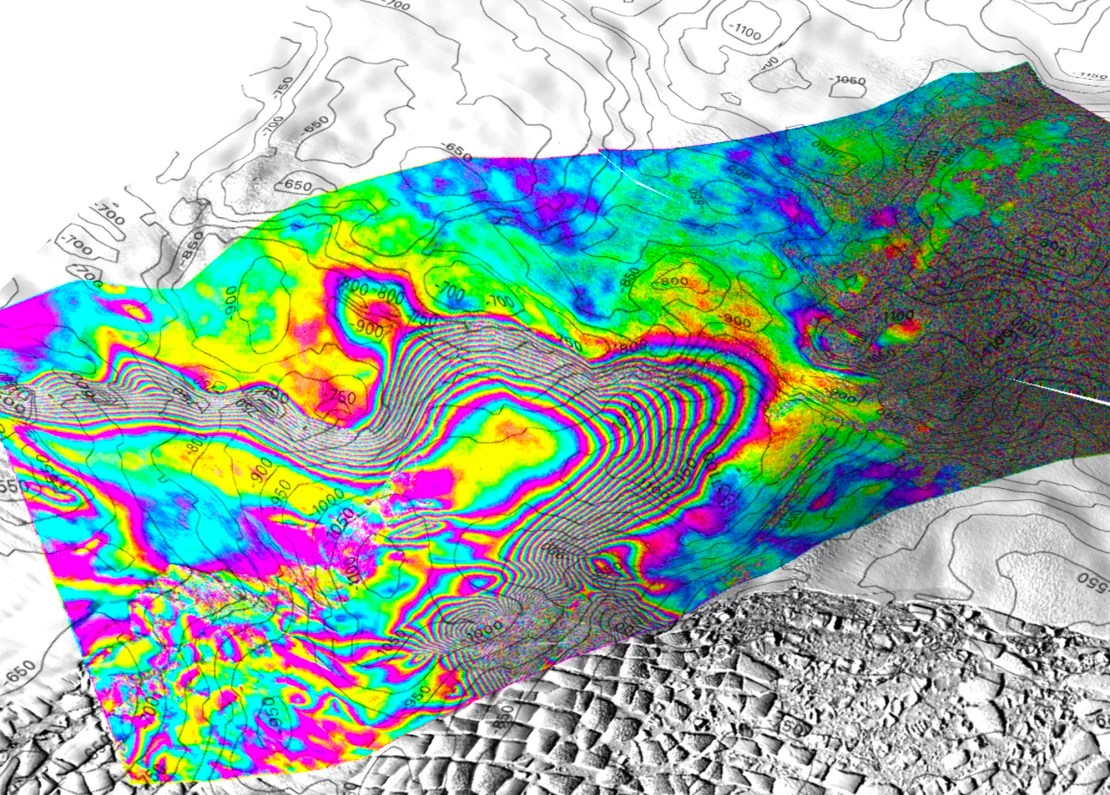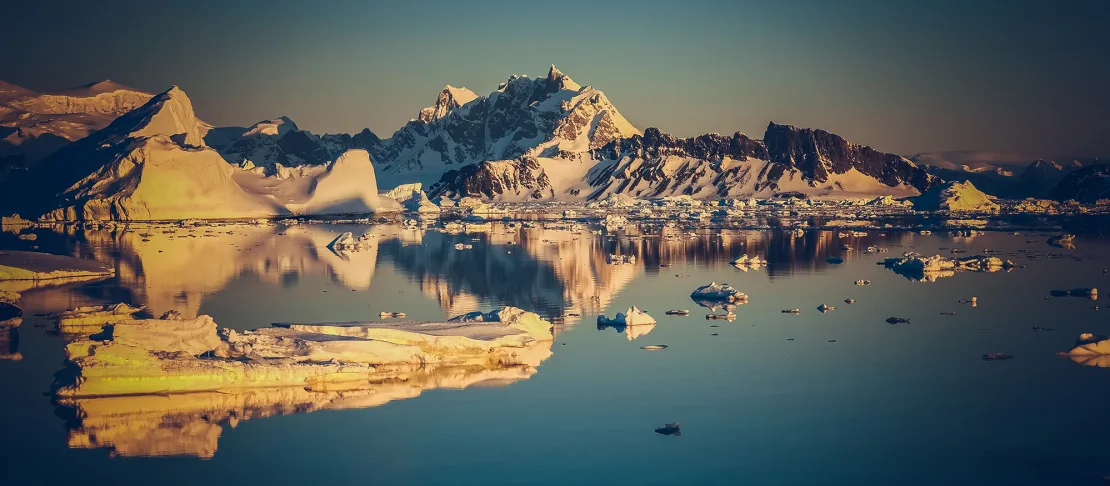(CNN) — Ocean water is pushing meters beneath Antarctica's “doomsday glacier,” making it more vulnerable to melting than previously thought, according to new research that used radar data to X-ray the critical glacier from space.
As relatively warm, salty ocean water meets the ice, it creates “intense melting” beneath the glacier and underestimates predictions of global sea level rise, according to a study published Monday in the Proceedings of the National Academy of Sciences.
The Thwaites Glacier in West Antarctica, nicknamed the “Doomsday Glacier” because its collapse would be catastrophic at sea level, is the world's largest glacier, about the size of Florida. It is the most vulnerable and unstable glacier in Antarctica because the land it sits on slopes downward, allowing seawater to eat away at its ice.
Already contributing 4% to global sea level rise, the Thwaites contain enough ice to raise sea levels by 0.6 m (2 ft). But because it also acts as a natural dam for the surrounding ice in West Antarctica, the Scientists have estimated Its total collapse would eventually result in a rise in sea level of about 3 meters (10 feet), which would be devastating for the world's coastal communities.
Several studies have pointed to the enormous implications of Thwaites. Global warming, driven by humans burning fossil fuels, is hanging on “by its fingernails,” according to a 2022 study.
This latest research adds a new and alarming factor to his predictions of fate.
A team of glacier explorers led by scientists from the University of California, Irvine, used high-resolution satellite radar data collected between March and June last year to create an X-ray of the glacier. This allowed Thwaites to create a picture of changes at the “grounding line”, the point at which the glacier rises from the sea floor and becomes a floating ice shelf. Underground lines are vital to the stability of the ice and are a key point of vulnerability for the Thwaites, but they are difficult to study.
“In the past, we've only had sporadic data to look at this,” said Eric Rignot, a professor of Earth system sciences at the University of California and co-author of the study. “In this new data set, we have solid observations of what's going on, both daily and over months.”

- View of tidal movements on Thwaites Glacier, West Antarctica, recorded by Finland's ICEYE commercial satellite mission based on images acquired on May 11, 12 and 13, 2023. (Credit: Eric Rignot/UC Irvine.)
They observed that seawater was pushed under the glacier for several kilometers and then came back out following the daily rhythm of the tides. Rignot told CNN that when the water flows, it only “lifts” the surface of the glacier by a few centimeters.
According to his research, he suggested that the term “grounding zone” is more appropriate than grounding line, as it can move nearly 6.5 kilometers (4 miles) in a 12-hour tidal cycle.
The speed of seawater, which moves significant distances in a short period of time, increases ice melt because as the ice melts, fresh water is swept away and replaced by warmer seawater, Rignot said.
“This massive and widespread seawater intrusion process will increase sea level rise projections from Antarctica,” he added.
Ted Scambos, a glaciologist at the University of Colorado Boulder who was not involved in the study, called the research “fascinating and important.”
“This discovery provides a process that, until now, has not been taken into account in models,” he told CNN. Although these results apply to only certain areas of the glacier, “it may accelerate the rate of ice loss in our projections,” he said.
One point of uncertainty that needs to be resolved is whether the flow of seawater beneath the Thwaites is a new phenomenon or something significant but long unknown, said James Smith, a marine geologist with the British Antarctic Survey who was not involved. study
“Regardless, it's an important process that needs to be incorporated into ice models,” he told CNN.
Noel Cormelon, professor of Earth observation at the University of Edinburgh, said it was interesting to use radar data for the study. “Ironically, by going into space and using our growing satellite capabilities, we are learning more about this environment,” he told CNN.
There are still many unknowns about what the study's findings mean for the future of Thwaites, said Gourmelen, who was not involved in the research. It's unclear how widespread the process is in Antarctica, he told CNN, “although it's likely to happen elsewhere.”
Regime change
Antarctica, an isolated and complex continent, appears increasingly vulnerable to the climate crisis.
By analyzing satellite data and using climate models, they found that “this achievement is much lower without the impact of climate change.”
In a separate study published this Monday, researchers from the British Antarctic Survey examined the causes of the low sea ice that blanketed Antarctica last year.

Sea ice around Rothera Point, Adelaide Island, west of the Antarctic Peninsula. Credit: Steve Gibbs/PAS.
Melting sea ice does not directly affect sea level rise because it is already floating, but it exposes coastal ice sheets and glaciers to waves and warm ocean water, making them more vulnerable to melting and breaking up.
The researchers used climate models to predict the potential speed of recovery from such extreme loss of sea ice, and found that even after two decades, not all of the ice would return.
“The impacts of Antarctic sea ice remaining low for more than two decades will be profound, including on local and global climate,” BAS study co-author Louise Sime said in a statement.
The findings add to evidence from recent years that the region is facing “protracted regime change”.





:quality(85)/cloudfront-us-east-1.images.arcpublishing.com/infobae/KTKFKR763RBZ5BDQZJ36S5QUHM.jpg)